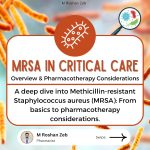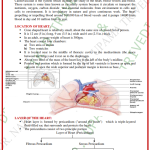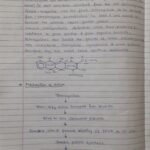MONOCLONAL ANTIBODIES:
Preparation, evaluation &
Application
Department of pharmaceutics
Govt college of pharmacy
Mpharm 2nd sem
www.DuloMix.com 1
Contents:
• Basic concepts and Introduction
• Monoclonal Antibodies: History and
Development
• Preparation of Monoclonal
Antibodies
• Evaluation
• Applications
www.DuloMix.com 2
Basic concepts and
Introduction
MONOCLONAL ANTIBODIES
www.DuloMix.com 3
An antibody binds to a specific region on an antigen called an
epitope. A single antigen can have multiple
epitopes for different, specific antibodies.
www.DuloMix.com 4
Monoclonal
antibodies
• Monoclonal antibodies are identical immunoglobulins,
generated from a single B-cell clone. These antibodies
recognize unique epitopes, or binding sites, on a single
antigen. Derivation from a single B-cell clones and
subsequent targeting of a single epitope is what
differentiates monoclonal antibodies from polyclonal
antibodies.
• Polyclonal antibodies are antibodies that are derived
from different cell lines. They differ in amino acid
sequences.
www.DuloMix.com 5
Characters of monoclonal
Antibodies
• Monoclonal antibodies (mAB) are single type of
antibody that are identical and are directed against a
specific epitope (antigen, antigenic determinant) and
are produced by B-cell clones of a single parent or a
single hybridoma cell line.
• A hybridoma cell line is formed by the fusion of one B-
cell lymphocyte with a myeloma cell.
• Some myeloma cell synthesize single mAB antibodies
naturally.
www.DuloMix.com 6
Differences between polyclonal and Monoclonal antibodies
Polyclonal antibodies Monoclonal antibodies
Produced by: Many B cell clones A single B cell clone
Binds to: Multible A single epitope of
epitopes of all a single
antigen used antigen
in the
immunization
Antibody class: A mixture of All of a single Ab class
differentAb
classes
(isotypes)
Ag-binding sites: A mixture of Abs All Abs have the same
with different antigen
antigen-binding binding sites
sites
Potential for High Low
cross-
reactivity:
www.DuloMix.com 7
Advantages of using Monoclonal
Antibodies:
• Though expensive, monoclonal antibodies are
cheaper to develop than conventional drugs because
it is based on tested technology.
• Side effects can be treated and reduced by using mice-
human hybrid cells or by using fractions of antibodies.
• They bind to specific diseased or damaged cells
needing treatment.
• They treat a wide range of conditions.
www.DuloMix.com 8
Disadvantages of using Monoclonal
Antibodies:
• Time consuming project – anwhere between 6 -9
months.
• Very expensive and needs considerable effort to
produce them.
• Small peptide and fragment antigens may not be good
antigens- monoclonal antibody may not recognize the
original antigen.
• Hybridoma culture may be subject to contamination.
• System is only well developed for limited animal and
not for other animals.
• More than 99% of the cells do not survive during the
fusion process – reducing the range of useful antibodies9
that can be produced against an antigen
www.DuloMix.com 9
History and Development
MONOCLONAL ANTIBODIES
www.DuloMix.com 10
Monoclonal Antibodies: History
and Development
• Paul Enrlich at the beginning of 20th century
coined the term “magic bullets” and
postulated that, if a compound could be
made that selectively targets a disease-
causing organism, then a toxin for that
organism could be delivered along with
the agent of selectivity.
• In the 1970s, the B-cell cancer multiple
myeloma was known. It was understood
that these cancerous B-cells all produce a
single type of antibody (a paraprotein).
www.DuloMix.com 11
• In 1975, Kohler and Milstein provided the
most outstanding proof of the clonal
selection theory by fusion of normal and
malignant cells (Hybridoma technology) for
which they received Nobel prize in 1984.
• In 1986, first monoclonal antibody was
licenced by FDA. Orthoclone OKT3
(muromonab-CD3) which was approved for
use in preventing kidney transplant
rejection.
1
3
www.DuloMix.com 12
Preparation
MONOCLONAL ANTIBODIES
www.DuloMix.com 13
Preparation of Monoclonal
Antibodies
• Monoclonal Antibody production or mAb is produced by
cell lines or clones obtained from the immunized
animals with the substances to be studied. Cell lines are
produced by fusing B cells from the immunized animal
with myeloma cells.
• To produce the desired mAB, the cells must be grown in
either of two ways: by injection into the peritoneal
cavity of a suitably prepared mouse (in vivo method) or
by in vitro tissue culture.
• The vitro tissue culture is the method used when the
cells are placed in culture outside the mouse the
mouse’s body in flask.
www.DuloMix.com 14
Preparation of Monoclonal
Antibodies
www.DuloMix.com 15
Practical steps for production
1. Immunize animal
2. Isolate spleen cells (containing antibody-producing B cell)
3. Fuse spleen cells with myeloma cell (using PEG)
4. Allow unfused B cell to die
5. Add aminopterin to culture and kill unfused myeloma cells
6. Clone remaining cells (place 1 cell/well and allow each cell to
grow into a clones of cell)
7. Screen supernatant of each clone for presence of desired
antibody
8. Grow chosen clone of cells in tissue culture indefinitely
9. Harvest antibody from the culture.
10. 1000-2000 permg
www.DuloMix.com 16
Evaluation
MONOCLONAL ANTIBODIES
www.DuloMix.com 17
1. Characterisation of
monoclonal antibodies
• Physicochemical
characterisation
• Immunological
properties
• Biological activity
• Purity, impurity and
contaminants
• Quantity
www.DuloMix.com 18
2. Specifications
• Identity
• Purity and
impurities
• Potency
• Quantity
• General tests
www.DuloMix.com 19
1.1 Physicochemical characterisation
• A physicochemical characterisation program will
generally include a determination of the class, subclass,
light chain composition and primary structure of the
monoclonal antibody.
• The class or subclass of an antibody is defined by its
heavy chain. There are five main classes of antibodies:
M, G, A, E, and D. The method of antibody purification
will differ based on the class.
• The amino acid sequence should be deduced from DNA
sequencing and confirmed experimentally by
appropriate methods (e.g. peptide mapping, amino acid
sequencing, mass spectrometry analysis).
• The variability of N- and C- terminal amino-acid
sequences should be analysed (e.g. C-terminal lysine(s)).
www.DuloMix.com 20
Types of Immunoglobulin
www.DuloMix.com 21
1.2 Immunological properties
• Binding assays of the antibody to purified antigens and
defined regions of antigens should be performed, where
feasible, to determine affinity, avidity and
immunoreactivity (including cross reactivity with other
structurally homologous proteins).
• Unintentional reactivity/cytotoxicity for human tissues
distinct from the intended target should be documented.
• The epitope and molecule bearing the relevant epitope
should be defined. This should include a biochemical
identification of these structures (e.g. protein,
oligosaccharide, glycoprotein, glycolipid), and relevant
characterisation studies (amino acid sequence,
carbohydrate structure) to the extent possible.
www.DuloMix.com 22
Immunogenicity potential based on
source of Ig
www.DuloMix.com 23
1.3 Biological activity
• The biological activity (i.e. the specific ability or capacity
of a product to achieve a defined biological effect)
should be assessed by appropriate in vitro assay(s).
• Where in vivo assays are necessary, the use of such
assays should be thoroughly justified.
• The mechanism of action and the importance (or
consequences) of the product effector functions with
regards to the safety and efficacy of the product should
be discussed.
www.DuloMix.com 24
1.4 Purity, impurity and contaminants
• These methods generally include the determination of
physicochemical properties such as molecular weight or
size, extinction coefficient, electrophoretic profiles,
chromatographic data and spectroscopic profiles.
• Potential process-related impurities (e.g. HCP, host cell
DNA, cell culture residues, downstream processing
residues) should be identified, and evaluated
qualitatively and/or quantitatively, using
chromatographic technique.
• Contaminants, which include all adventitiously
introduced materials not intended to be part of the
manufacturing process (e.g. microbial species,
endotoxins) should be strictly avoided and/or suitably
controlled.
www.DuloMix.com 25
1.5 Quality
• Quantity should be determined using an
physicochemical and/or immunochemical assay.
• It should be demonstrated that the quantity values
obtained are directly
related to those derived using the biological assay.
• When this correlation exists, it may be appropriate to
use measurement of quantity rather than the
measurement of biological activity in the product
labelling and manufacturing processes, such as filling.
www.DuloMix.com 26
2. Specifications
• Specifications are one part of a total control strategy
designed to ensure product quality and consistency, and
when tested, the product should be in compliance with its
specification.
• Specifications should be set and take into account relevant
quality attributes identified in characterisation studies.
• Selection of tests to be included in the specifications is
product specific.
• The rationale used to establish the acceptable range of
acceptance criteria should
be described.
www.DuloMix.com 27
2.1 Identity
• The identity test(s) should be highly specific and should be
based on unique aspects of the product’s molecular structure
and/or other specific properties (e.g. peptide map, anti-
idiotype immunoassay, or other appropriate method).
• Considering the great similarity of the constant domains of
different antibodies, more than one test (physicochemical,
biological and/or immunochemical) may be necessary to
establish identity, and such test(s) should be able to
discriminate other antibodies that may be manufactured in
the same facility.
www.DuloMix.com 28
2.2 Purity and Impurities
• As noted in the characterisation section, monoclonal
antibodies may display a complex purity/impurity profile that
should be assessed by a combination of orthogonal methods,
and for which individual and/or collective acceptance criteria
should be established for relevant product-related variants.
• For example, separation methods based on charge
heterogeneity is considered to quantitatively and
qualitatively monitor charge variants.
• Considering that glycosylation may have an impact on the
pharmacokinetics of the product, and may modulate its
immunogenic properties, appropriate acceptance criteria
should be considered for this attribute. In addition, such
control will further confirm the consistency of the product.
www.DuloMix.com 29
2.3 Potency
• Potency is the quantitative measure of biological activity
based on an attribute of the product which is linked to
the relevant biological properties. A relevant potency
assay should be part of the specifications for drug
substance and/or drug product, and should ideally reflect
the biological activity in the clinical situation.
• For antibodies for which the clinical activity is only
dependent on binding/neutralising properties, a
potency assay that measures binding to the target (i.e.
binding assay) is acceptable when appropriately
justified.
www.DuloMix.com 30
2.4 Quantity
• The quantity of the drug substance, usually based
on protein content (mass), is determined
chromatographically using reference standard.
2.5 General tests
Appearance, solubility, pH, osmolality,
extractable volume,sterility,bacterial
endotoxins, stabiliser and water, is assessed
where appropriate.
www.DuloMix.com 31
Applications
MONOCLONAL ANTIBODIES
www.DuloMix.com 32
Major Applications:
(1) Diagnostic Applications
• Biochemical analysis
• Diagnostic Imaging
(2) Therapeutic Applications
• Direct use of MAbs as
therapeutic agents
• MAbs as targeting agents.
(3) Protein Purification
www.DuloMix.com 33
1a. Biochemical analysis
• Routinely used in radioimmunoassay (RIA) and enzyme-
linked immunosorbent assays (ELISA) in the laboratory.
• These assays measure the circulating concentrations of
hormones (insulin, human chorionic gonadotropin, growth
hormone, progesterone, thyroxine, triiodothyronine, thyroid
stimulating hormone) and several other tissue and cell
products (blood group antigens, blood clotting factors,
interferon’s, interleukins, tumor markers).
Eg. Pregnancy by detecting the urinary levels of human
chorionic gonadotropin.
Hormonal disorders analysis of thyroxine, triiodothyronine.
Cancers estimation of plasma carcinoembryonic antigen in
colorectal cancer, and prostate specific antigen for prostate
cancer
www.DuloMix.com 34
1b. Diagnostic imaging
• Radiolabeled—MAbs are used in the diagnostic imaging
of diseases, and this technique is referred to as
immunoscintigraphy. The radioisotopes commonly used
for labeling MAb are iodine—131 and technetium—99.
The MAb tagged with radioisotope are injected
intravenously into the patients.
• These MAbs localize at specific sites (say a tumor) which
can be detected by imaging the radioactivity. In recent
years, single photon emission computed tomography
(SPECT) cameras are used to give a more sensitive three
dimensional appearance of the spots localized by
radiolabeled— MAbs.
3
• Myocardial infarction, DVT, atherosclorosis etc. 5
www.DuloMix.com
2a. Direct use of MAbs as
therapeutic agents
• In destroying disease-causing organisms: MAbs
promote efficient opsonization of pathogenic organisms
(by coating with antibody) and enhance phagocytosis.
• In the immunosuppression of organ transplantation:
In the normal medical practice, immunosuppressive
drugs such as cyclosporin and prednisone are
administered to overcome the rejection of organ
transplantation. In recent years, MAbs specific to T-
lymphocyte surface antigens are being used for this
purpose
www.DuloMix.com 36
• In the treatment of
cancer:
MAbs, against the
antigens on the surface of
cancer cells, are useful for
the treatment of cancer.
The antibodies bind to
the cancer cells and
destroy them via different
pathways.
www.DuloMix.com 37
• In the treatment of AIDS: Genetic engineers have been
successful to attach Fc portion of mouse monoclonal
antibody to human CD4 molecule. This complex has high
affinity to bind to membrane glycoprotein gp120 of virus
infected cells. The Fc fragment induces cell-mediated
destruction of HIV infected cells.
www.DuloMix.com 38
2a. MAbs as targeting
agents.
• The drugs can be coupled with MAb
(directed against a cell surface antigen
of the cells, say a tumor) and specifically
targeted to reach the site of action.
Eg. Alkaline phosphatase for the
conversion of
phosphate pro-drugs.
Carboxy peptidase for converting
inactive carboxyl pro-drugs to active
drugs.
Faculty of 4
Pharmaceut Lactamase for hydrolyzing β-lactam 3
ringww cwo.DunlotMaix.icnoming antibiotics. 39
• Drug delivery through liposomes coupled to tissue-
specific MAbs:
✓Liposomes are sacs or vesicles formed spontaneously
when certain lipid molecules are exposed to aqueous
environment.
✓Drug entrapped in liposomes that are coated with
MAbs directed against
tissue-specific antigens are being tried for drug delivery.
✓Unfortunately, the progress in this approach has been
limited, since such liposomes do not reach the target
cells.
✓They are retained mostly in the liver and spleen
(reticuloendothelial cells), and degraded.
www.DuloMix.com 40
3. Protein Purification
• Monoclonal antibodies can be produced for any protein. And
the so produced MAb can be conveniently used for the
purification of the protein against which it was raised.
• MAbs columns can be prepared by coupling them to
cyanogen bromide activated Sepharose (chromatographic
matrix). The immobilized MAbs in this manner are very useful
for the purification of proteins by immunoaffinity method.
• There are certain advantages of using MAbs for protein
purification. These include the specificity of the MAb to bind
to the desired protein, very efficient elution from the
chromatographic column and high degree of purification.
4
1
www.DuloMix.com 41
Few Commercially available mAb
approved by FDA
Name Trade name Target Use
Abciximab ReoPro CD41 (integrin Platelet aggregation
alpha-IIb) Inhibitor
Adalimubab Humira TNF-alpha Rheumatoid
arthritis, Crohn’s
Disease, Plaque
psoriaris, psoriatic
Arthritis
Alirocumab Praluent PCSK9 Hypercholesterolemia
Avilumab Bavencio PD-L1 Cancer
Benralizum Facenra CD125 Asthma
ab
Daclizumab Zenapax CD25 Organ transplant
rejection
4
Daratumub wDwawr.DzualoleMxix.com CD-38 Multiple Myeloma 2
ab
42
Questions
• Describe in brief the preparation ,evaluation
and application of MAB ? (10M – 2 Times)
• Explain the preparation and evaluation of
MAB ? ( 5M )
• Explain monoclonal antibodies with their
application ?(5m)
www.DuloMix.com 43
References:
• Shivanand P. (2010). “Hybridoma technology for production of
monoclonal antibodies”
International Journal of Pharmaceutical Sciences Review and Research
vol.1, issue 2(017)
• U. Marx et al. (1997)“Monoclonal Antibody Production” The Report and
Recommendations of
ECVAM Workshop ATLA 25, 121.137,
• Edward A. Greenfield, (2014) “Antibodies: A Laboratory Manual” Cold
Spring Harbor Laboratory Press, 2nd ed. Chapter7
• Justin K.H. Liu, (2014) “The history of monoclonal antibody
development Progress, remaining challenges and future innovations”
Annals of Medicine and Surgery (2014) 113-116
• Andrew S., Otavia C., (2014) “Monoclonal antibodies for the therapy of
cancer” Simpson and Caballero BMC Proceedings 2014, 8 (Suppl 4)
• WHO Guidelines on evaluation of monoclonal antibodies as similar
biotherapeutic products,
2016 4
4
www.DuloMix.com 44
4
5
www.DuloMix.com 45










